Read an excerpt of Britt’s speech to the World Economic Forum
On living meaningfully with climate anxiety
Hi there!
Welcome to Gen Dread, a newsletter about how the climate crisis is making us feel, why that’s happening, and what we can do about it. Subscribe now to find community, comfort, and practical coping and acting strategies from experts all around the world.
Last week, Britt was invited to speak at the 14th annual World Economic Forum’s Annual Meeting of the New Champions in Tianjin, China. More than 1500 figures from around the world working in government, economics, activism, business, and academia were in attendance. The session she led was called Living Meaningfully with Climate Anxiety with Stanford University and we’re sharing an excerpt of it here this week. If you have critiques bubbling up of WEF or of Britt’s decision to travel to China to speak about the mental health angle on climate action, that’s understandable and anticipated to some degree, so you’re welcome to share any thoughts about that.
Here is an excerpt.
Good morning everyone.
Do you remember when the skies turned orange in San Francisco a few years ago from wildfire smoke? Or when the same phenomenon happened recently in New York City, as the smoke from Canadian wildfires rolled over to choke the sky, and actors on Broadway had to stop performing because it was too hard to breathe?
These events are hallmarks of the fact that our human activities are destroying the climatic and ecological conditions that allowed civilization to emerge and thrive, which is a really distressing thought.
Today we’re here to explore the often ignored mental health emergency within the climate emergency that will severely distress and traumatize billions of people if leaders do not make deep-seated changes to how the mental health of their populations is safeguarded – faster and more effectively than has ever been done before.
Let’s get a quick show of hands. How many of you have ever lost sleep with worry over the climate crisis, thinking about what it means for your own life, or for your children?
How many of you have ever felt a pang of grief for the up to one million species that scientists tell us we are pushing to extinction by the end of the century?
I have, on both accounts.
These are appropriate emotional responses to the troubled state of the world. And while the distress they cause can threaten mental health, it can also be leveraged for courageous climate action and stronger community ties that can improve our wellbeing, if we’re mindful about how to harness it.
Let’s back up and look at the broader relationship between climate change and mental health.
The climate crisis threatens mental health through multiple pathways. First there’s the direct and indirect stressors to mental health. Events like typhoons, wildfires and droughts, and the disruptions they cause to necessities like food, work, and shelter, can lead to clinical anxiety and depression, post-traumatic stress disorder, substance abuse, and suicidality, while extreme heat can make people violent and self-harming. The psychological impacts of disasters outnumber the physical impacts 40:1.
Then there’s physical health. Climate change makes us sick, full stop, impacting nutrition, air pollution, the spread of vector-borne diseases, and more, and as we get physically sicker, our mental health suffers. For example, asthma, made worse by the combustion of fossil fuels that pollute the air, is associated with increased risk of anxiety and depression.
Lastly, the constant barrage of bad news about the climate is stoking mental and emotional distress.
But we’re not all equally vulnerable to these impacts. Populations that are disproportionately affected include:
Children and young people
Women
People on the frontlines of disaster, who are predominantly in the global south, as well as people who can’t evacuate quickly, endangering the poor and those living with disabilities.
People with pre-existing mental illness, who are 2-3 times more likely to die in a heatwave
Communities that face a lot of discrimination which can affect the aid they receive after a disaster, such as LGBTQI+ people.
Those living in close relationship with the land that is changing, such as ranchers and farmers.
Indigenous peoples worldwide
And frontline climate professionals, the climate scientists, journalists, green policymakers, and activists, because there’s a crushing psychological toll that comes with studiously bearing witness to the breakdown of a safe climate.
Crucially, it isn’t just that climate stressors threaten life and livelihood and therefore mental health. It’s also that, as climate events traumatize individuals, overwhelm communities, and stress health systems, people’s capacity to protect the climate through transforming the systems in which we live gets weakened, because how battered we feel determines how well we can build a new world. So, what we’re dealing with is a vicious cycle.
Perhaps you’ve heard of “climate anxiety”, a widely used and rather imprecise term that describes a sense of worry, angst, terror, or dread about the climate crisis. Now despite the clinical-sounding name, researchers and clinicians argue that climate anxiety is not a mental disorder and should not be seen as a pathology, as though it’s that individual’s problem, when it is actually a symptom of external sources of danger that affect the whole population, such as still rising carbon emissions and inadequate action from powerholders to do what the science says must be done to keep humans safe and healthy, for instance: halt the expansion of new fossil fuel infrastructure, which has understandably started making millions of people around the world feel chronically insecure.
That’s why some have argued that “climate anxiety” should be called “climate compassion” instead: it’s a sign of connection to reality and care for all that is in harm’s way.
But it gets complicated quickly.
Climate anxiety is linked in the literature repeatedly with pro-environmental behaviour and climate activism. The distress can cause a person to sit up straight, reassess how they’re showing up in the world, and work to better align their actions with their values. Greta Thunberg, for instance, went through an intense period of climate anxiety and depression before catalyzing a global movement of students striking for climate action.
However, if a person is not supported, climate anxiety can become so severely damaging to their mental health that it impairs functioning, and it has been linked to panic attacks, eating disorders, sleep problems, and suicidality.
If you think I’m exaggerating, just listen to these statistics.
In order to understand how the climate crisis is psychologically affecting young people, my colleagues and I surveyed 10,000 16–25-year olds in 10 countries around the world, including India, the Philippines, Nigeria, France, the US, and Australia. We were alarmed by what we found.
45% of youth globally reported that their thoughts and feelings about the climate crisis are interfering with daily life tasks, such as eating, sleeping, and concentrating, and this jumped to an average of 70% in the Global South countries. 75% of youth said that the future is frightening to them. 56% said that humanity is doomed. And 39% said they feel hesitant to have kids one day because of it. These thoughts and feelings were also significantly associated with a sense of being failed by leaders and lied to by governments.
In another study we found that US youth who’d been exposed to at least one climate hazard were significantly more likely to factor climate change into their future plans, affecting intentions around travel, education, and whether to have children. The socioeconomic impacts could be significant given that kids born today already experience 3-7x the number of extreme weather hazards as their grandparents, and exposure can shape plans for how to live one’s life.
And in yet a different study, this time of 4,000 participants in China, Japan, the US, and India, researchers found China and India to have the highest climate anxiety scores, with over 20% of Chinese participants and 30% of Indians reporting that they sometimes or frequently experience functional impairment from climate anxiety.
The good news is that there’s a lot we can do to protect and promote mental health in our warming world. We can turn the vicious cycle I described into a virtuous one by prioritizing policies and practices that are WIN-WIN solutions, benefitting both problems at once.
Connection and cohesion are the way forward.
If there’s one thing that I hope this presentation will leave you with today, it’s that we will unlock a cascade of win-win solutions if we take a public health approach to rising climate mental health challenges. That means a preventative approach that focuses on strengthening the resilience and mental wellbeing of whole communities, by focusing on social cohesion, social trust and social ties in the places where people live, over a biomedical approach that just looks to treat mental illness of individuals through one on one clinical care.
The potential of social relationships to allow residents in a community to coordinate their efforts and achieve shared goals is what’s known as social capital. A rich body of disaster psychiatry research shows that people with high social capital and connectedness take care of each other more effectively while disaster is happening, they rebuild faster when their community is torn apart, and crucially, they show significantly lower levels of mental disorder in the aftermath. In one Australian study, a cyclone that ripped through a neighbourhood and tore the roofs off of children’s homes found that the children in the local school who had high social trust and connectedness, that is, more people in their lives they could rely on, could talk to and felt safe with, had far lower scores of post-traumatic stress disorder than the most socially isolated kids in class.
In the context of the climate crisis, social capital can be fostered by empowering members of a community to identify and work on environmental problems that they care about in the places where they live. For example, by figuring out how to get the local community equipped with a cooling center for heatwaves, or rolling out a tree planting project to provide shade in urban heat islands that both absorb carbon dioxide and protect residents on hot days, neighbours learn the skills of how to lead, follow, and trust each other, so that when bad things do happen, their protective social infrastructure is already in place.
It sounds simple, and it is, but at a time when loneliness has emerged as a health epidemic in some countries, and more people are living alone worldwide than ever before, social isolation is actively in the way of how well we can prevent climate traumas. Helping people move away from individualism towards distributed collective power by working together at a local level, is a key mental illness prevention strategy.
But of course, not all traumas can be prevented, and some will need to be responded to. Problem is, many industrialized nations cannot meet the need for mental health services that their citizens require, and in many poorer nations, specialist care infrastructure is sorely lacking. There just aren’t enough clinicians, and so the biomedical model is insufficient. Fortunately, laypeople can be trained by clinicians to support their neighbors and peers with mental health problems like anxiety and depression by stripping interventions of their jargon, and simplifying them for lay-leaders to use, even though they have no former psychological expertise. Clinical trials show that this “task shifting” approach, as it is called, can be even more effective at helping people recover from mental illness than primary care.
So, to recap, to prevent climate mental health challenges, think of: “Do a favor, work with neighbors”
And to treat climate mental health challenges in ways that can spread, think: “Peer-sharing for scalable caring”
Some things that will actually help.
Of course, the really big thing that will prevent climate mental health problems from spreading is serious action to quit our addiction to fossil fuels, because there is no such thing as coping if we keep feeding what’s causing more frequent and ferocious disasters and migration crises, that will compound human suffering at a scale never seen before. But while we’re still struggling to transition to a clean energy economy in ways that are fair and just, we can help ourselves out by identifying and amplifying protective factors that can help us cultivate resilience.
Resilience building protective factors are all the things that allow us to be with the suffering that is in the world and our lives, not be indifferent to it, and simultaneously cultivate the skills of generating enough happiness and joy that we can serve others or serve mother earth and live meaningful lives. This may look like emotion-regulation skills that a person can get from mindfulness, spirituality, drawing strength from one’s ancestors, flexible thinking beyond rigid black and white categorization that helps us keep things in perspective, self-efficacy or the belief that one’s actions can make a difference, and even “forest bathing” – intentionally spending time in nature to regulate the nervous system – which is linked to restored attention and decreased anxiety and depression.
A crucial protective factor against the worst impacts of climate anxiety is when we learn to see adversities as opportunities to practice new things with others, to play, to learn, and to grow which creates a sense of meaning, purpose, and active hope in our lives. This is what psychologists call the “growth mindset”. Even despairing climate pessimists can become optimistic in a rugged and courageous way if they learn to access this way of perceiving.
In the last few years, a plethora of climate-focused mental health supports have emerged to help people feel less alone in their fears about climate breakdown including climate cafes: a globally decentralized network of meetings where people can have frank conversations about how the climate crisis is making them feel, why that is, and what they can do about it; climate-aware therapists from places like the Climate Psychology and Climate Psychiatry Alliances, who take a non-pathologizing approach to clinical work with climate anxious people; and peer-led support groups like the Good Grief Network, whose 10-step program helps people soothe climate anxiety and grief in community, and then transform the energy they’ve lost from being stressed out into more purposeful action. Anyone can be trained as a facilitator of this program, which is already being used in 16 countries.
My team and I at Stanford’s School of Medicine are now working to accelerate a movement that brings a public health approach to climate mental health challenges in order to improve our collective human capacity to mitigate and adapt to the worst impacts of the climate crisis. We are researching how to implement community-minded prevention and healing interventions that build resilience across networks of communities, as well as educating and empowering clinicians and community leaders on their roles within such interventions. To bring about this sea change and wide-reaching launch of mental health tools that touch everyone in a community, we need to build innovative and powerful infrastructure and are looking for partners who both believe in this mission and vision and want to be a part of it. We hope you will join us.
And together with colleagues around the world, we’re creating a global research and action agenda for climate change and mental health called Connecting Climate Minds, that’s rooted in the lived experiences of directly impacted individuals and communities. (You can find out more here).
As we know, the climate crisis is anthropogenic, it is caused by our human behaviour, we hear this all the time. And yet, where are the behaviouralists and psychologists when it comes to discussing solutions? It’s absurd that psychological insights have been mostly overlooked for decades while we’ve been talking about the crisis in terms of gigatons, graphs, carbon taxes, and technologies, and just look at where that has gotten us. The time for psychology and emotions has come. Yes, to help people make more sustainable decisions, but also for more effective community organizing from a place of shared grievances. Because by talking about what you’re losing, what they’re losing, what I’m losing, what we’re losing, how that feels, and what keeps us awake at night, climate distress can help us open up what everyone is feeling at some level, creating a tremendous opportunity for meaningful action and solidarity.
A lot of our assumptions about how we live, where we live, how we work, and even what our families look like are destabilizing in the climate crisis, driving illness, distress, and despair, and as we have seen with the COVID-19 pandemic, this kind of mental health fallout can really muck up society. But this cross-cutting destabilization, which can now be felt in countries around the world, is exactly where the global community needs to meet on this issue, and step into a shared structure of feeling about the crisis that moves the world towards the appropriate emergency response
I’d like to conclude with a quote from researchers who explained the value of climate distress so eloquently in the medical journal The Lancet, when they wrote: “Recognizing that emotions are often what leads people to act, it is possible that feelings of ecological anxiety and grief, although uncomfortable, are in fact the crucible through which humanity must pass to harness the energy and conviction that are needed for the lifesaving changes now required.” Thank you.
If you liked reading this, feel free to click the ❤️ button on this post so more people can discover it on Substack 🙏🏼
Making Waves
Britt will be an instructor in the upcoming Climate Psychology Certificate (CPC) Fall 2023 cohort at California Institute of Integral Studies (CIIS)! CPC provides additional psychological training and skills to competently and innovatively address the growing mental health impacts of the climate emergency.
CIIS Public Programs will also be offering a $300 referral discount to all applicants who use the referral code CPCFA23. Once accepted into the program, you will be given an opportunity to use this code and receive the discount. CPC will take place as live synchronous learning via Zoom over five weekends. Applications are open through July 31.
The Maternal Psychology Lab at Teachers College is recruiting mothers for a study that compares two nature-based matrescence (transition into motherhood) groups (in-person and online) for mothers experiencing eco-distress (climate and environment-related concern). The curriculum places eco-distress on a developmental trajectory to center mothers’ strengths in coping with and making meaning about this unique challenge to maternal mental health and wellness.
As always, you can share your thoughts and reach the Gen Dread community by commenting on this article or replying to this email. You can also follow along on Twitter and Instagram.
‘Till next time!


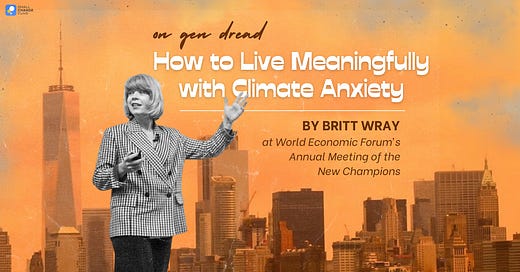



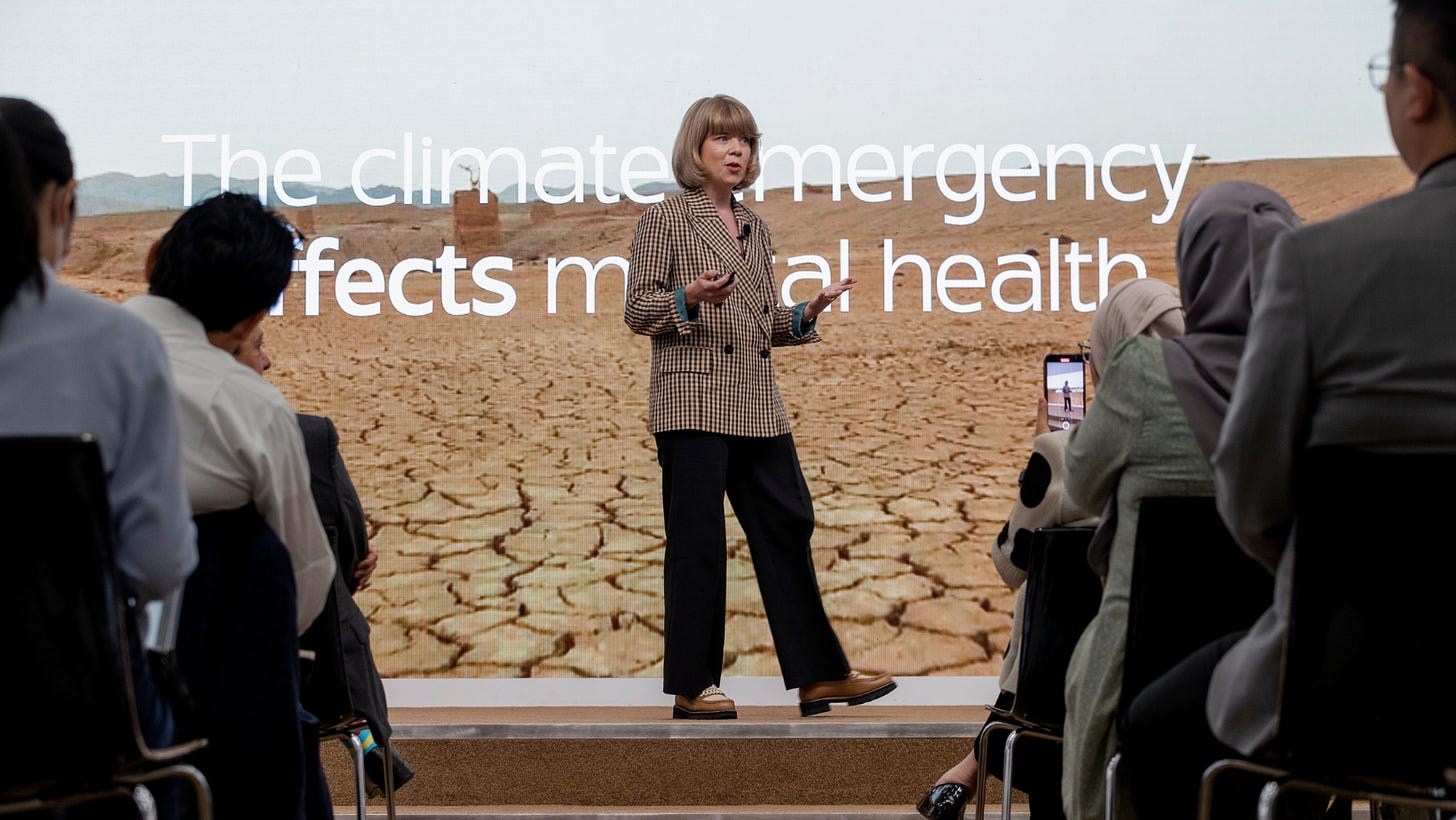


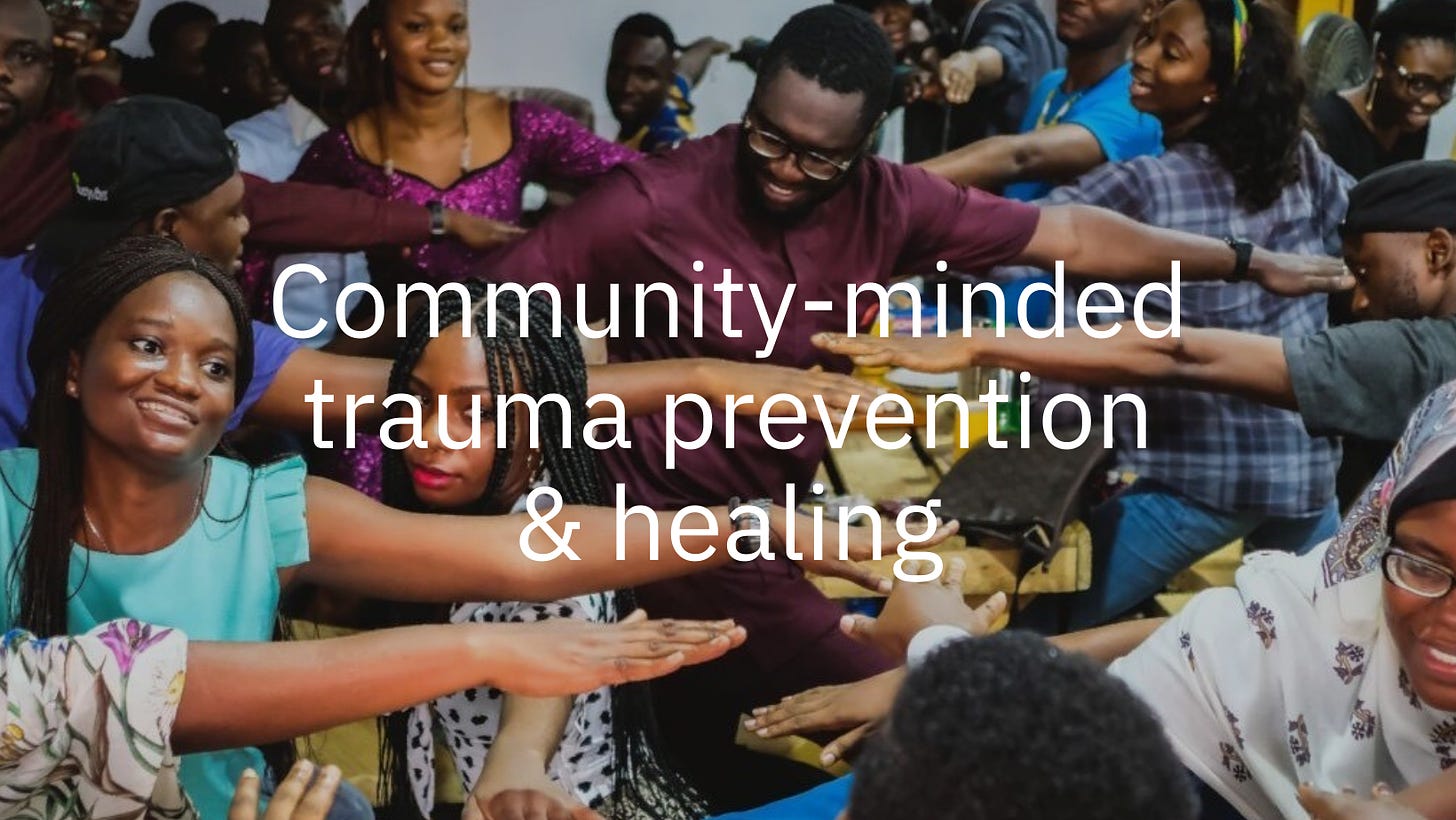
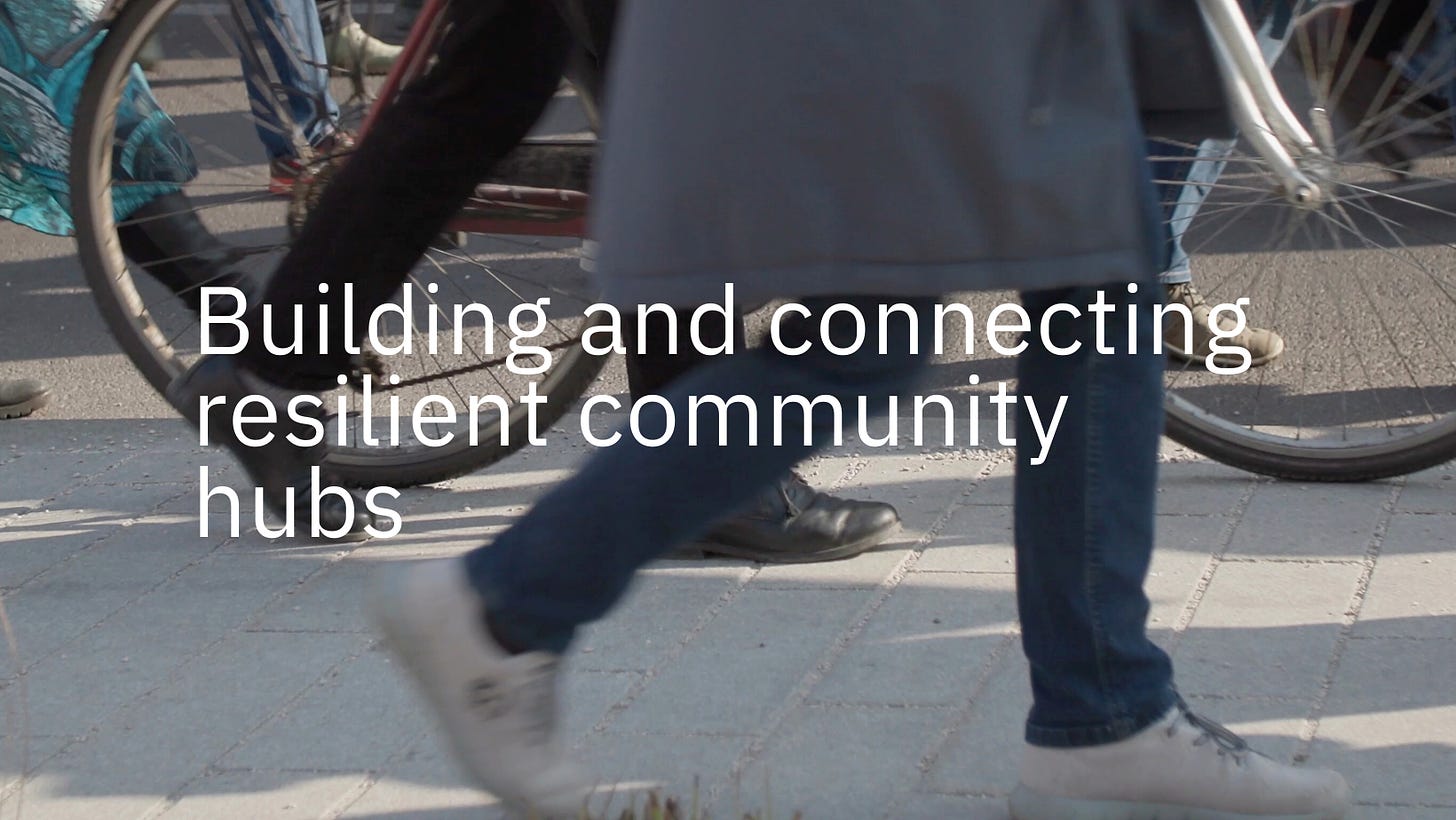
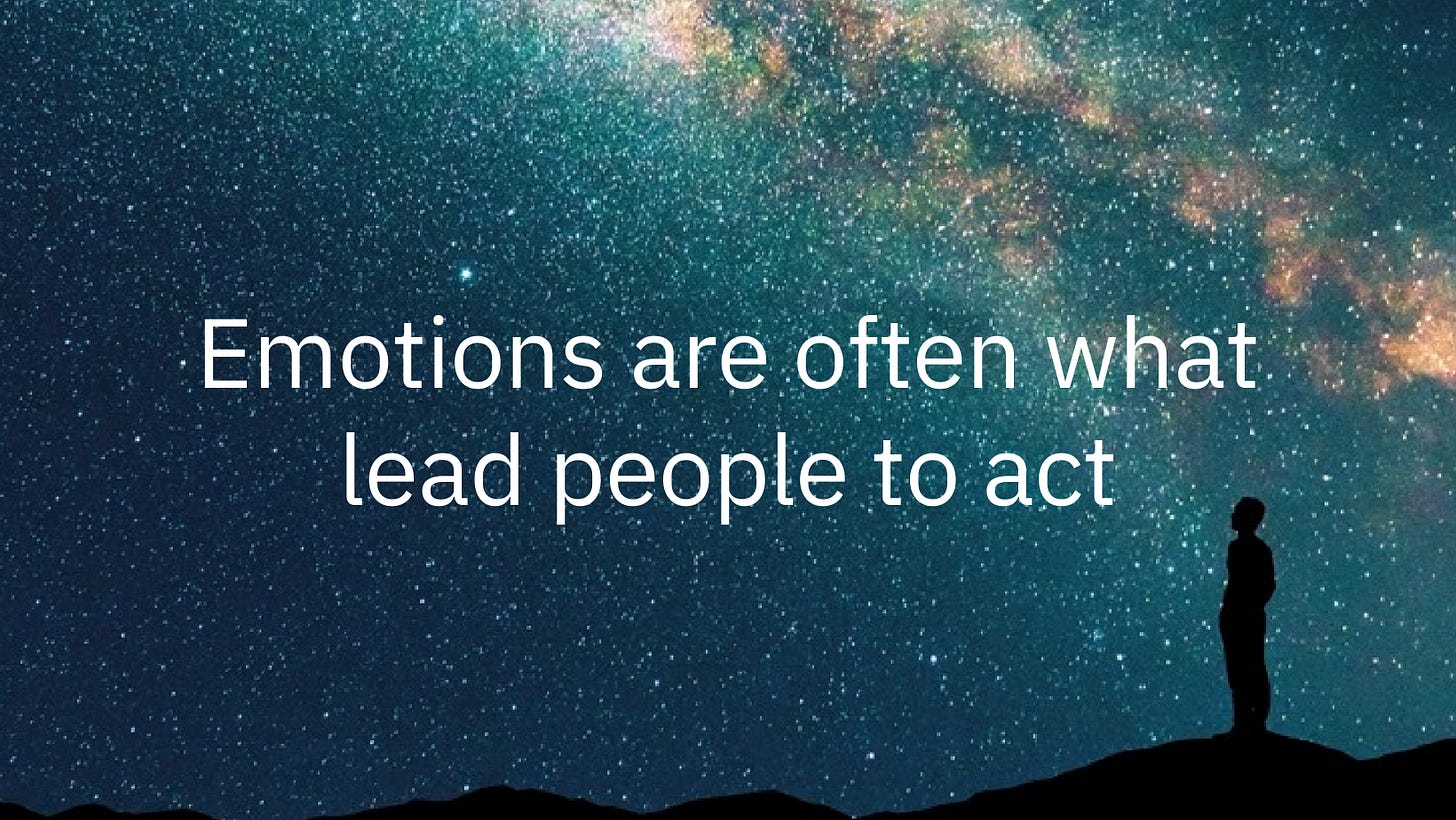
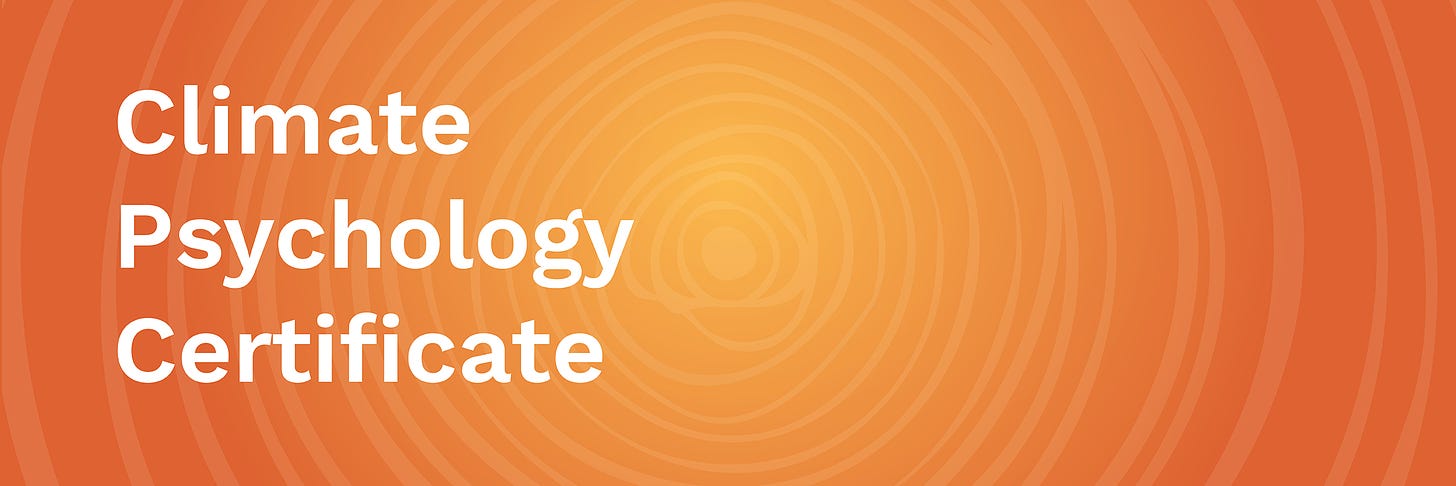

In the recent trial of Held v. Montana, Lise Van Susteren did an excellent job of explaining the mental and physical harm being done by climate change.
Imagine being invited to the World Economic Forum and thinking you're part of "The Resistance". Greta's Green Guards are the new Red Guards. Textbook examples of a useful idiots.